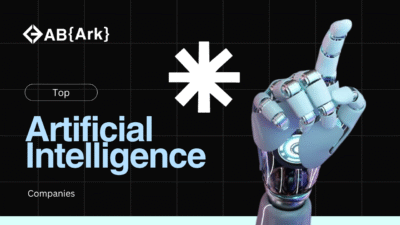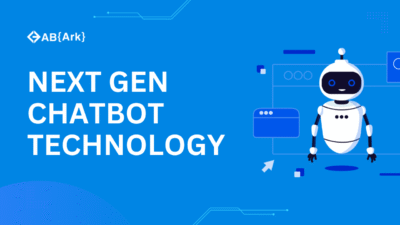Every successful machine learning model development process begins with clarity. Define your business or research problem with measurable outcomes. Are you trying to predict sales? Detect fraud? Recommend products?
Align with key stakeholders to set clear KPIs (Key Performance Indicators). This is your foundation. Use frameworks like CRISP-ML(Q) or MLOps lifecycle to organize the problem and define success criteria.
Key questions to ask:
- What is the nature of the problem (classification, regression, clustering)?
- What decisions will this model support?
- How will success be measured?
Step 1: Data Collection and Preprocessing
Once your objective is clear, the next phase is gathering and preparing your data. High-quality data is the fuel of your machine learning engine.
Data collection: Pull from internal databases, APIs, sensors, third-party sources, or web scraping tools. Ensure your data sources are reliable and relevant to the task.
Data preprocessing includes:
- Cleaning: Handling missing values, outliers, duplicates
- Transformation: Normalizing, standardizing, encoding categorical variables
- Feature engineering: Creating new variables, selecting useful features
- Feature stores: Repositories that store curated features for reuse
This step directly influences your model’s performance. Poor data = poor results.
Step 2: Select the Right Model and Architecture
With clean data, you’re ready to choose the model architecture. Your choice depends on the problem type, dataset size, and interpretability needs.
Popular model options include:
- Linear regression and logistic regression
- Decision trees and random forests
- Support Vector Machines (SVM)
- K-Nearest Neighbors (KNN)
- Neural networks (for deep learning tasks)
- Ensemble models (e.g., Gradient Boosting Machines)
Tip: Start simple. Create a baseline model using a basic algorithm. Once you have a benchmark, explore complex models or use AutoML to automate model selection.
Step 3: Train, Validate, and Tune Your Model
Training is where your model learns from the data. You’ll split your dataset into:
- Training set: The portion used to train the algorithm.
- Validation set: Used to fine-tune hyperparameters.
- Test set: For final model evaluation.
Cross-validation helps prevent overfitting and ensures your model generalizes well. Techniques like early stopping, dropout, and regularization are helpful when training deep learning models.
Hyperparameter tuning is crucial. Use tools like:
- Grid Search
- Random Search
- Bayesian Optimization
- Automated tools like Optuna or Scikit-learn’s built-in functions
Step 4: Evaluate Model Performance
Model evaluation is not just about accuracy. Depending on your task, consider metrics like:
- Precision, Recall, F1 Score for classification
- Mean Squared Error (MSE), R² Score for regression
- ROC-AUC for binary classifiers
Use k-fold cross-validation for robust performance estimation. Also evaluate on unseen test data to understand real-world behavior.
Pro tip: Always compare multiple models using consistent metrics before choosing your final one.
Step 5: Deploy the Model
Deployment turns your model into a usable application. This could be via:
- RESTful APIs
- Microservices architecture
- Embedded in mobile or desktop apps
- On cloud platforms like AWS SageMaker, Google AI Platform, or Azure ML
Incorporate CI/CD pipelines for ML (MLOps) to automate version control, testing, and rollback strategies. Tools like MLflow, DVC, and TensorFlow Serving support streamlined deployments.
Step 6: Monitor and Maintain the Model
Once live, your model is never truly “done.” You must monitor it for:
- Model drift: When the data your model sees in production changes
- Data drift: When feature distributions shift over time
- Performance degradation: Reduced accuracy or slow predictions
Use monitoring dashboards and set alerts to notify when performance dips below a threshold. Set up automated retraining pipelines to keep your model fresh and responsive.
This is where MLOps best practices—like containerization, orchestration, and monitoring tools—become vital for long-term success.
Challenges and Best Practices in Machine Learning Model Development
Common challenges:
- Insufficient or poor-quality data
- Imbalanced datasets
- Overfitting due to small data or overly complex models
- Bias in training data
- Lack of model explainability
Best practices:
- Start with baseline models before jumping to deep learning
- Regularly update your model based on new data
- Keep code and experiments version-controlled
- Ensure model reproducibility
- Leverage explainable AI (XAI) tools for transparency and trust
Utilizing feature stores, automated pipelines, and proper documentation saves time and ensures scalable ML model development.
Frequently Asked Questions (FAQs)
Q1: What are the stages of machine learning model development?
A: The key stages include: problem definition, data preparation, model selection, training, evaluation, deployment, and monitoring.
Q2: How much data is needed to train a model?
A: It depends on the model complexity and task. For deep learning, more data is usually needed. For simpler models, hundreds to thousands of records may suffice.
Q3: What is hyperparameter tuning?
A: It’s the process of optimizing the settings (like learning rate, max depth, etc.) that guide model training to improve performance.
Q4: Can I deploy a model without MLOps?
A: Technically yes, but without MLOps, your model may be harder to scale, maintain, and monitor in production environments.
Conclusion: The Path to Reliable, Scalable AI
Machine learning model development is a structured process that transforms raw data into actionable intelligence. By following this step-by-step guide, you can build models that are not only accurate—but scalable, reliable, and production-ready.
The future of ML is heading toward automation, explainability, and continuous learning. Tools like AutoML, MLOps pipelines, and cloud-based deployment platforms will continue simplifying the workflow.
Remember, a good model is not just trained well—it’s built, evaluated, deployed, and maintained with care.
Let this guide be your go-to resource every time you start a new ML project.




